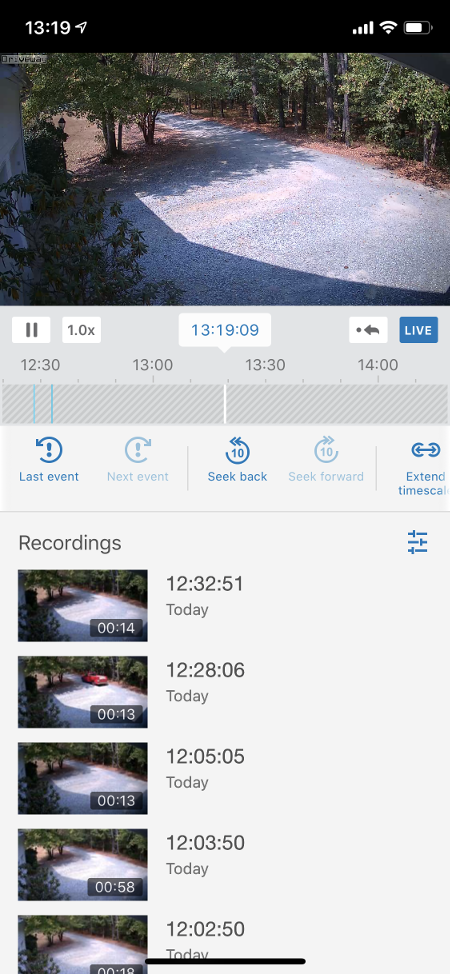My neighbor recently asked me for advice on security cameras. Lately when anyone asks me for tech recommendations, I just send them to The Wirecutter. However, in this case their suggestions won’t work because every option they recommend requires decent Internet access.
I live on a 21 acre farm 10 miles from the nearest gas station. I love where I live but it does suffer from a lack of Internet access options. Basically, there is satellite, which is slow, expensive and with high latency, or Centurylink DSL. I have the latter and get to bask in 10 Mbps down and about 750 Kbps up.
Envy me.
Unfortunately, with limited upstream all of The Wirecutter’s options are out. I found a bandwidth calculator that estimates a 1 megapixel camera encoding video using H.264 at 24 fps in low quality would still require nearly 2 Mbps and over 5 Mbps for high quality. Just not gonna happen with a 750 Kbps circuit. In addition, I have issues sending video to some third party server. Sure, it is easy but I’m not comfortable with it.
I get around this by using an application called Surveillance Station that is included on my Synology DS415+. Surveillance Station supports a huge number of camera manufacturers and all of the information is stored locally, so no need to send information to “the cloud”. There is also an available mobile application called DS-cam that can allow you to access your live cameras and recordings remotely. Due the the aforementioned bandwidth limitations, it isn’t a great experience on DSL but it can be useful. I use it, for example, to see if a package I’m expecting has been delivered.

[DS-Cam showing the current view of my driveway. Note the recording underneath the main window where you can see the red truck of the HVAC repair people leaving]
Surveillance Station is not free software, and you only get two cameras included with the application. If you want more there is a pretty hefty license fee. Still, it was useful enough to me that I paid it in order to have two more cameras on my system (for a total of four).
I have the cameras set to record on motion, and it will store up to 10GB of video, per camera, on the Synology. For cameras that stay inside I’m partial to D-Link devices, but for outdoor cameras I use Wansview mainly due to price. Since these types of devices have been known to be easily hackable, they are only accessible on my LAN (the “LAN of things”) and as an added measure I set up firewall rules to block them from accessing the Internet unless I expressly allow it (mainly for software updates).
To access Surveillance Station remotely, you can map the port on the Synology to an external port on your router and the communication can be encrypted using SSL. No matter how many cameras you have you only need to open the one port.
The main thing that prevented me from recommending my solution to my neighbor is that the DS415+ loaded with four drives was not inexpensive. But then it dawned on me that Synology has a number of smaller products that still support Surveillance View. He could get one of those plus a camera like the Wansview for a little more than one of the cameras recommended by The Wirecutter.
The bargain basement choice would be the Synology DS118. It cost less than $200 and would still require a hard drive. I use WD RED drives which run around $50 for 1TB and $100 for 4TB. Throw in a $50 camera and you are looking at about $300 for a one camera solution.
However, if you are going to get a Synology I would strongly recommend at least a 2-bay device, like the DS218. It’s about $70 more than the DS118 and you also would need to get another hard drive, but now you will have a Network Attached Storage (NAS) solution in addition to security cameras. I’ve been extremely happy with my DS415+ and I use it to centralize all of my music, video and other data across all my devices. With two drives you can suffer the loss of one of them and still protect your data.
I won’t go in to all of the features the Synology offers, but I’m happy with my purchase and only use just a few of them.
It’s a shame that there isn’t an easy camera option that doesn’t involve sending your data off to a third party. Not only does that solution not work for a large number of people, you can never be certain what the camera vendor is going to do with your video. This solution, while not cheap, does add the usefulness of a NAS with the value of security cameras, and is worth considering if you need such things.